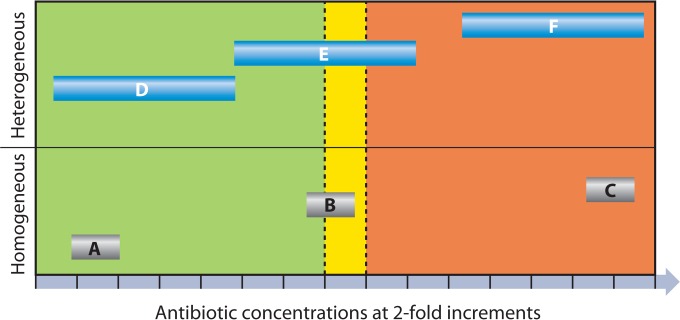FIG 1.
Heteroresistant versus homogeneous responses to antibiotics. Dotted lines represent breakpoints for resistance. Homogeneous bacterial cultures can be either susceptible (A), of intermediate susceptibility (B), or resistant (C) to an antibiotic according to traditional in vitro susceptibility testing. Heteroresistant bacteria may be any of the following. (D) Bacteria are completely susceptible to an antibiotic, whereby the different subpopulations respond to antibiotic concentrations extending below the breakpoints. This form is less likely to be detected and is probably the least clinically important (unless the least responsive subpopulations develop resistance to the antibiotic). (E) Bacteria exhibit the more classical form of heteroresistance, in which the majority of the bacterial population is susceptible to an antibiotic, with a highly resistant minority. Antibiotic treatment guided by the traditional susceptibility testing breakpoints would select for the resistant subpopulation, leading to therapeutic failure. (F) The entire bacterial population, including the least resistant subpopulations, is resistant to the antibiotic. Chemical communication of antibiotic resistance from the more resistant members of the population protecting less resistant bacteria is the major concern of such bacterial populations.

